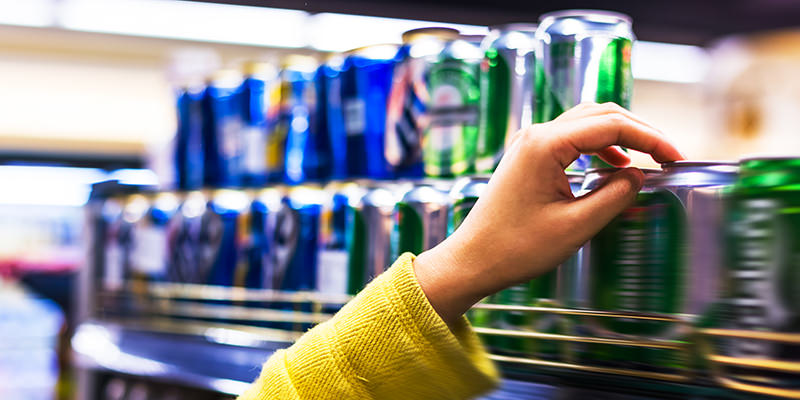 If you’ve gotten overambitious while preparing for a party, you might have had your fair share of leftover beer the next day. While those of us with brave livers might drink the remainders in one sitting, if you’re planning on storing your beer, you might be wondering how long it’ll last before it spoils. While the answer isn’t totally clear-cut, we do have some clues.
If you’ve gotten overambitious while preparing for a party, you might have had your fair share of leftover beer the next day. While those of us with brave livers might drink the remainders in one sitting, if you’re planning on storing your beer, you might be wondering how long it’ll last before it spoils. While the answer isn’t totally clear-cut, we do have some clues.
Like wine, beer isn’t a stagnant product and continues to age after bottling. However, aging beer won’t necessarily mature or develop the flavors as it often does with wine. Instead, a lower-proof beer – under 6% alcohol – will start to lose flavor and depth due to oxidation. Food science writer Jeff Porter describes these unpleasant tastes as “buttery” or “papery.” Darker beers can even taste like sherries. While the beer isn’t “spoiling” in the sense that it’s a danger to consume, you probably don’t want to be slinging back dull alcohol. So, how long until your leftover beer starts to taste bad?
For starters, kegged beer starts to nosedive in taste quicker than bottled beer, since bottled beer is typically pasteurized, which prevents bacteria from invading. Porter says most kegs have a shelf life of two months tops – and that’s if it’s kept cold.
Bottled beer however lasts a bit longer. David Cichowicz, founder of Good Beer NYC, says, “With hoppy beer – like wheat beer, lager, and IPAs – you notice the flavors starts to drop out after three to six months. [But] with some very fragile IPAs, I wouldn’t go longer than three, to be safe.”

However, Emma Christensen, author of True Brews and Brew Better Beer, doesn’t agree with the 3-6 month shelf life. According to her, if you keep beers at a consistent temperature, they have a good year before they start to turn.
Christensen also says that for higher alcohol beers, age actually helps, turning them into better beers. She writes, “Bottle-conditioned ales with an alcohol content of 9% or higher can be aged for longer than a year. They experience the same breakdown in flavor and structure, but this has been calculated to actually improve the flavor of the beer.” Cichowicz agrees, saying that any brew over 8% has to potential to develop.
If you were wondering if beer bottles have expiration dates, the answer is sort of. There are “sell-by” dates, however, they’re usually coded and therefore not very easy to make sense of. Cichowicz says, “It’s difficult to see [the sell-by date] on the bottle, because it’s usually printed in black on brown glass.” Moreover, the sell-by date is just that: a date to sell the beer by, not when the beer will lose flavor. In other words, that date is simply when the brewery wants the store to stop selling that bottle. Therefore, we believe sell-by dates aren’t the best determining factor as to whether or not your beer is still tasty.
The bottom line is that when it comes to session beers and other brews below 6% alcohol, you’re better off drinking your beer within one to two months of purchase – though don’t freak out if you wind up with a beer in the fridge for a bit longer. However, if you have a robust barleywine or a high-gravity beer like Sam Adam’s Utopias lying around, you can keep your bottled beer aging for a year or two. Just make sure it’s out of the sunlight and at a temperature of around 55°.
